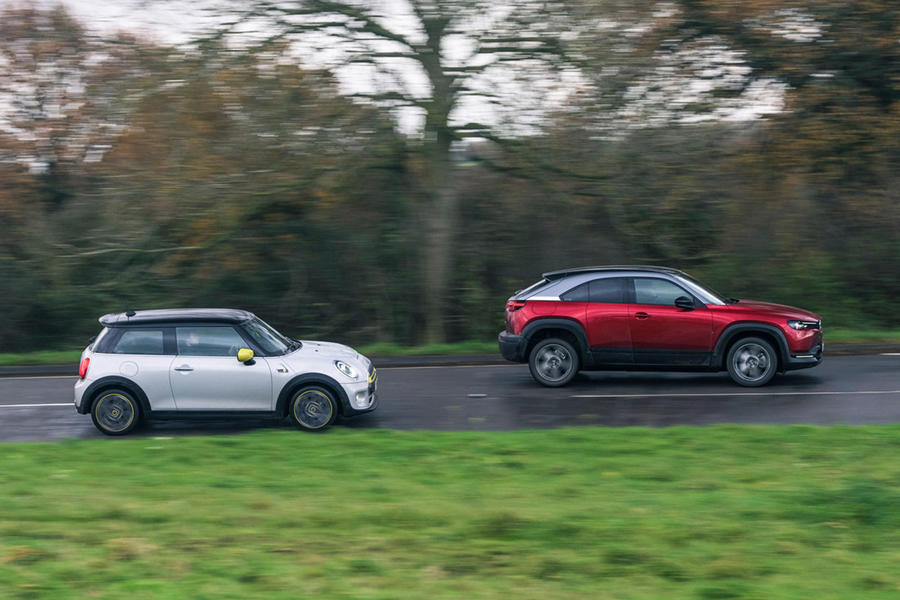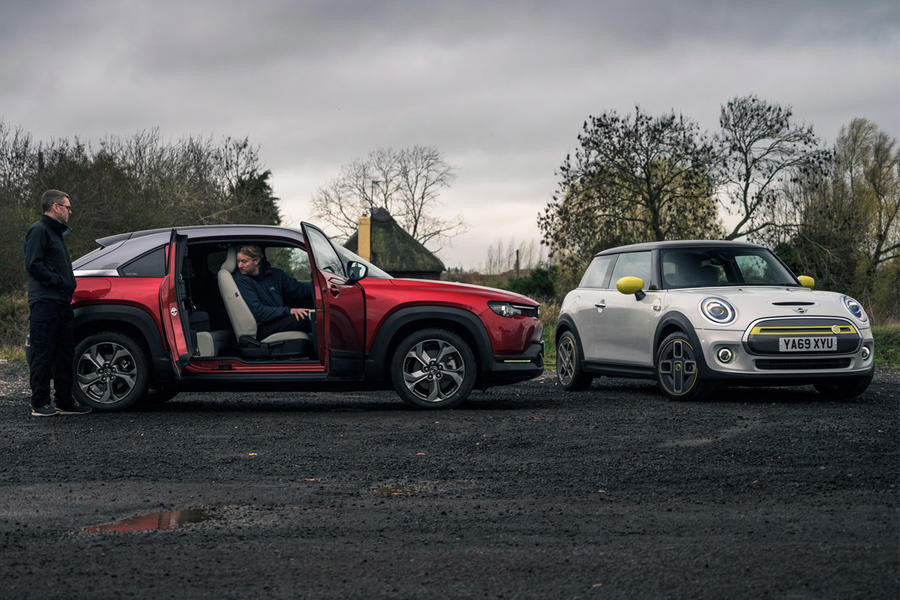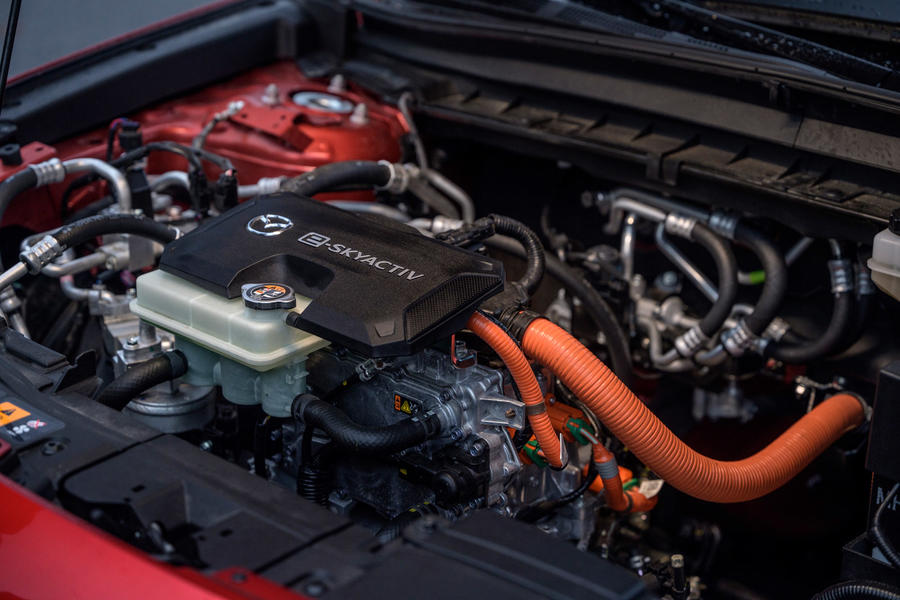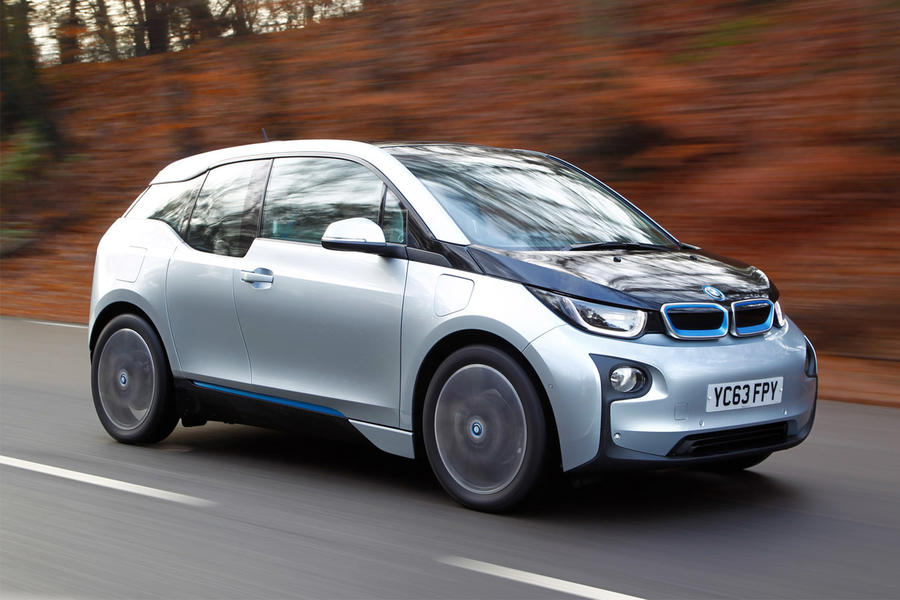“Although the Mazda sets out its spread of charms in more stately fashion, they absolutely exist”
These two compact electric cars have a rather short range, but prove entertaining to drive. We seek out their differences
Perhaps you’ve been waiting to discover an electric car that’s genuinely good to drive but are bored rigid of reading tributes to the Porsche Taycan (£85,000), Jaguar I-Pace (£64,000) and Polestar 2 (£45,000). Excellent cars all, but crikey, they don’t half make a dent.
Some good news, then. Neither of the EVs in this brief twin test costs more than £28,000 after the government grant for plug-in cars, yet both come from makers who understand the importance of involving the driver. More than that, it could be argued that, at their very best, the Mini Cooper and Mazda MX-5 exemplify what we love about front- and rear-driven sports cars respectively. So even before we’ve unplugged the charging cables, there’s cause for optimism.
The Mini Electric has been out for some time, so it’s already a known quantity. In short, we like it. We especially like its turn of pace (thank you, 199lb ft of slap-bang torque), the trademark fish-bowl view forward, the conspicuous sense that the centre of gravity is grazing the road surface and its well-tuned steering response, which is so important in achieving the ‘go-kart’ agility that Mini frequently references. If you want to buy small and electric but still need that driving buzz, so far this is your best ‘affordable’ option (unless you can find yourself in a Renault Twizy on a wet roundabout).
The only thing we don’t especially like about the model that already accounts for one in 10 new Minis sold is its meagre range. Fully charged, it barely gets 140 miles on the official test cycle, dropping to around 110 miles in the real world. And this isn’t simply a quirk of the supermini segment: the Peugeot e-208 is officially rated at 206 miles and even the new Fiat 500 will manage 199 miles. So while it’s unusually good to pedal about, the Mini cements its ‘second-car’ status before you even flip the bright-yellow toggle that prompts the electricals into life. Only you will know whether or not that’s a deal-breaker.

You might think the Mini’s range would be an opening for the less powerful, 235kg heavier and marginally costlier Mazda MX-30 to exploit and quickly even up the scales for overall appeal. But no. With 124 miles, the first electric Mazda somehow offers even less autonomy than the Mini.
Mazda’s defence is that it takes a ‘right-sizing’ approach, having carefully assessed the needs of would-be buyers. It says that fitting a bigger battery pack would make the MX-30 more expensive and the extra mass would blunt its handling, and all for no good reason, given that hardly anyone drives more than 50 miles daily. Hmm. Objectively that may be true, and it seems sensible enough on paper. But for a compact crossover, even one intended for suburban commuters, this is an unambiguously punchy strategy, and more so because Mazda desperately needs to sell plenty of these cars in Europe to avoid CO2-related fines.
Apologies for the range-related downer, but at least now we can move on and get to the good bits. After all, what would boost the MX-30’s appeal considerably among existing (and surprisingly discerning, not to mention loyal) Mazda owners when it arrives in the UK imminently is if it can scalp the little Mini dynamically.
Get up close and it presents like one of those twee motorshow concept cars from around the millennium. Remember the Ford 021C or the Dodge Kahuna? Maybe you don’t, but the MX-30’s cylindrical lights, chunky cladding and uncomplicated lines give it the same flavour of super-sized toy-box charm.
The cabin is less adventurous, but only marginally so. There are rear ‘suicide’ doors and some cork trim (like Peugeot, Mazda is one of those manufacturers that originally started off making something completely different to cars – in this case cork, in 1930), but today the boring old driving ergonomics are what count. And they’re solidly good, not least because they borrow heavily from the ICE models.
As ever with Mazda, there are no configurable driving modes or confusing gimmicks when you want to get going. Unlike the Mini, whose interior is a montage of bloop-bleep sounds, fluoro-hues and quirky displays (although, in the case of the main instrument dials, one that’s not even centred properly and is surprisingly rough in resolution), the Mazda is traditional.

The thin-rimmed steering wheel could have been ripped straight from an MX-5, the digital instruments are designed to look analogue and the fabric seats may appear to have been ordered from the Heal’s catalogue but are supportive, comfortable and sporting. By comparison, the Mini sets its driver deliciously low, with even more figure-hugging seats and a view forward that feels as though your eyeline is just skimming the scuttle. One of these cars strikes a classy GT-esque tone while the other feels raw pocket-rocket, and there’s no question which is which.
The same distinction applies to the driving experience. Both the Mini and the MX-30 are, as we had expected, unusually good to drive by the often one-dimensional standards of the electric car class. But despite possessing that hallmark EV neutral balance, they’re chalk and cheese in the way they go down a road.
The 181bhp Mini – around 140kg heavier than the comparable petrol-engined Cooper S but with an even lower centre of gravity – is clearly the quicker car, being more cleanly responsive both in terms of powertrain and handling.
Both cars ride more fluidly that you might think, given the spring rates must surely be higher to accommodate the mass of the batteries, but in the Mini, body roll is minimal and grip levels are genuinely excellent. You can thank the balanced weight distribution for that, and the overall effect is a car that feels one-to-one in the way it reacts to steering and throttle inputs. Playful? Not so much. Just ferociously direct, and thrilling with it. The synaptic hit that this car can deliver, seemingly out of nowhere, lingers in your nervous system. Bravo, Mini.
By comparison, and despite its motor making a Mini-matching 199lb ft, our early-build MX-30 feels slightly ponderous, although in fairness so would many genuinely quick ICE cars.
The Mazda’s brakes don’t muster anything like the feel or confidence of the Mini’s firm and high-biting pedal, either. And of course there’s also the higher driving position, which is lovely for pottering about but sets entirely the wrong tone for driving satisfaction.

Yet although it sets out its spread of charms in more stately fashion than the Mini, those charms absolutely exist. The steering is beautifully realised for an electric crossover and wouldn’t feel out of place in a proper sports car. Perhaps the biggest surprise is that it’s more communicative than the Mini’s helm, and the gearing is in almost perfect unison with the roll rates – a Mazda hallmark.
Maximum enjoyment is achieved by threading the MX-30 along with your fingertips, deftly sustaining momentum (which has the added benefit of maximising range) by working with the fluid body movements. Drive the Mazda like the Mini wants to be driven and you will frustrate yourself with the deficit in grip and performance. Drive it like you’re in an anaemic little MX-5 and you will discover an unexpectedly good driver’s car.
In truth, neither of these relatively small, relatively affordable electric cars feels like a defining specimen in the evolution of the species. However, where they succeed equally and strikingly well is in the way they translate the dynamic identity of their respective brands into the electric realm. If you found a blindfold and an empty car park big enough, you would know who built these cars within seconds. And that comes as a relief, doesn’t it?
As for choosing a winner… You will enjoy the understated ease and finesse with which the Mazda conducts itself, but only one of these cars will get you out of the house for a Sunday blast. Just make sure it’s a short one.
The original electric hot hatch

Spot a BMW i3 on the road today and it still looks so fresh and innovative that you would swear the model had been introduced no earlier than 2018, and especially not as far back 2013.
Naturally, the i3 has gone through several revisions during its lifespan, gaining more power and range and losing its range-extender option on the way. Today, there’s the choice of the 168bhp i3 and the 181bhp i3s, with lower and stiffer suspension, wider tracks and revised steering.
Were it not for its circa-£40,000 price, we would have included it in this test, because if you want a small electric driver’s car, on ability alone it deserves consideration. How might it have fared? I suspect it would have neither the rapier-sharp manner of the Mini nor the dynamic elegance of the Mazda, but it might have taken top honours. It remains an awesomely appealing and interesting machine in the right environment.
READ MORE
In search of the perfect EV: Life with the Mini Electric
2021 Mini Electric set to gain styling tweaks, new infotainment
Source: Autocar
